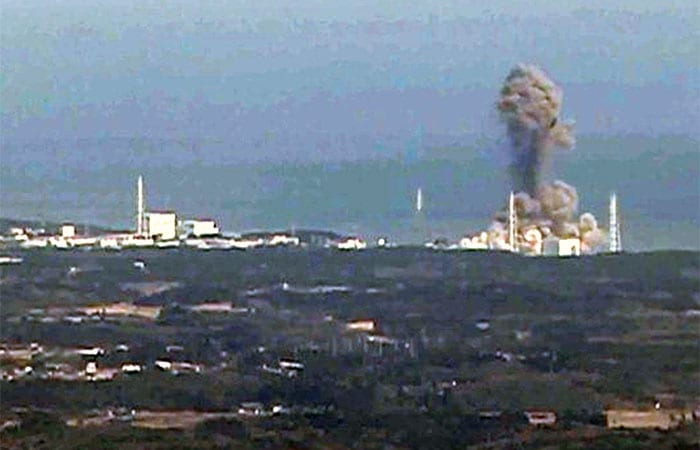Welcome to DU!
The truly grassroots left-of-center political community where regular people, not algorithms, drive the discussions and set the standards.
Join the community:
Create a free account
Support DU (and get rid of ads!):
Become a Star Member
Latest Breaking News
General Discussion
The DU Lounge
All Forums
Issue Forums
Culture Forums
Alliance Forums
Region Forums
Support Forums
Help & Search
Latest Breaking News
In reply to the discussion: Japan OKs plan to release Fukushima nuclear plant wastewater [View all]Kid Berwyn
(14,876 posts)26. Reactor 3 ran plutonium enriched fuel.

Japan’s Misguided Plutonium Policy
As for what’s getting dumped into the sea that Japan has admitted to:
New paper addresses the mix of contaminants in Fukushima wastewater
August 6, 2020
Nearly 10 years after the Tohoku-oki earthquake and tsunami devastated Japan’s Fukushima Dai-ichi Nuclear Power Plant and triggered an unprecedented release radioactivity into the ocean, radiation levels have fallen to safe levels in all but the waters closest to the shuttered power plant. Today, fish and other seafood caught in waters beyond all but a limited region have been found to be well within Japan’s strict limits for radioactive contamination, but a new hazard exists and is growing every day in the number of storage tanks on land surrounding the power plant that hold contaminated wastewater. An article published August 7 in the journal Science takes a look at some of the many radioactive elements contained in the tanks and suggests that more needs to be done to understand the potential risks of releasing wastewater from the tanks into the ocean.
We’ve watched over the past nine-plus years as the levels of radioactive cesium have declined in seawater and in marine life in the Pacific,” said Ken Buesseler, a marine chemist at the Woods Hole Oceanographic Institution and author of the new paper. “But there are quite a few radioactive contaminants still in those tanks that we need to think about, some of which that were not seen in large amounts in 2011, but most importantly, they don’t all act the same in the ocean.”
Since 2011, Buesseler has been studying the spread of radiation from Fukushima into and across the Pacific. In June of that year, he mobilized a team of scientists to conduct the first international research cruise to study the early pathways that cesium-134 and -137, two radioactive isotopes of cesium produced in reactors, were taking as they entered the powerful Kuroshio Current off the coast of Japan. He has also built a network of citizen scientists in the U.S. and Canada who have helped monitor the arrival and movement of radioactive material on the Pacific coast of North America.
Now, he is more concerned about the more than 1,000 tanks on the grounds of the power plant filling with ground water and cooling water that have become contaminated through contact with the reactors and their containment buildings. Sophisticated cleaning processes have been able to remove many radioactive isotopes and efforts to divert groundwater flows around the reactors have greatly reduced the amount of contaminated water being collected to less than 200 metric tons per day, but some estimates see the tanks being filled in the near future, leading some Japanese officials to suggest treated water should be released into the ocean to free up space for more wastewater.
One of the radioactive isotopes that remains at the highest levels in the treated water and would be released is tritium, an isotope of hydrogen is almost impossible to remove, as it becomes part of the water molecule itself. However, tritium has a relatively short half-life, which measures the rate of decay of an isotope; is not absorbed as easily by marine life or seafloor sediments, and produces beta particles, which is not as damaging to living tissue as other forms of radiation. Isotopes that remain in the treated wastewater include carbon-14, cobalt-60, and strontium-90. These and the other isotopes that remain, which were only revealed in 2018, all take much longer to decay and have much greater affinities for seafloor sediments and marine organisms like fish, which means they could be potentially hazardous to humans and the environment for much longer and in more complex ways than tritium.
Continues…
https://www.whoi.edu/press-room/news-release/fukushima-tank-contaminants/
Those are the facts.
Edit history
Please sign in to view edit histories.
30 replies
 = new reply since forum marked as read
Highlight:
NoneDon't highlight anything
5 newestHighlight 5 most recent replies
RecommendedHighlight replies with 5 or more recommendations
= new reply since forum marked as read
Highlight:
NoneDon't highlight anything
5 newestHighlight 5 most recent replies
RecommendedHighlight replies with 5 or more recommendations
Once again earthlings, there is no safe disposal of this waste. We will all suffer for any releases.
Evolve Dammit
May 2022
#1
The plan they've been pushing for years is just to give up containing the water
NullTuples
May 2022
#9
The tsunami destroyed the plant's cooling systems, causing the meltdown of three reactors.
Lasher
May 2022
#3
It wasn't the force of the tsumani; it was putting the emergency generators in the basement
NullTuples
May 2022
#10
My point is the location wasn't the problem; minimizing cost was the problem
NullTuples
May 2022
#18
Tritium removal systems are in use elsewhere; TEPCO/Japan is taking the cheaper route
NullTuples
May 2022
#19
Good. It's long been a wasteful paean to ignorance to spend the money to store it.
NNadir
May 2022
#6